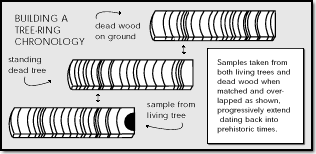Poor Yadirf attempted to argue:
:: But fanatical or dishonest or emotionally crippled Bible-believers will always hold on to their emotional crutch. What would they have without it?
: "Fanatical, or dishonest, or emotionally crippled Bible-believers"? In whose opinion?
Obviously, in the opinion of those who are not fanatical, dishonest or emotionally crippled. Those who are such are in a very poor position to judge their mental/emotional illness.
: Why the opinion of an agnostic, of course. In other words, one who has a brain that is so very complex that it most assuredly had to have had a Creator, but who can't make up his mind for sure whether there is a Creator or not.
There is a large difference between being unable to make up one's mind because of a mental problem, and a studied reservation of judgment because lots of conflicting evidence exists.
On the other hand, fanatics, the dishonest and the emotionally crippled have no problem making up their minds based on the flimsiest of evidence.
:: tree-ring dating using bristlecone pines in California, and other types of trees in several locations around the world, has been extended back to around 10,000 years
: That would mean that there has to be a petrified tree somewhere in existence that contains 10,000 rings, right?
Wrong. Time for a bit of education, which I know is anathema to you, but necessary for an intelligent discussion.
The oldest trees are bristlecones in the White Mountains of the Sierra Nevada in California. These only grow at high elevations, 10,000 feet and up, where conditions are extremely harsh and only the hardiest trees can live. The conditions are extremely dry and cold -- ideal for the preservation of wood. Many of the bristlecones are dead, and have been dead for thousands of years, but the cold, dry air has preserved the wood all that time. Dendrochronologists have found clear patterns of growth rings in living and dead trees, and have matched the older patterns in the living trees with patterns in the dead trees. By continuing the process of matching with various dead trees, and cross checking the results with radiocarbon dating, a pattern of tree ring growth has been found that goes back about 9,000 years. Similar methods have been used with trees in other parts of the world. Interestingly, dendrochronology has allowed a better calibration of radiocarbon dating.
To get more details, you simply need to visit a good technical library and do some reading. Another way is to use Internet search resources, such as www.google.com. Just type "dendrochronology" into a search engine and you'll find tons of references. Given your intellectual laziness, Yadirf, I've done that for you and here is a URL to a good, simple explanation of the science: http://www.sonic.net/bristlecone/dendro.html . Here is a more extensive look: http://www.library.arizona.edu/library/teams/set/earthsci/treering.html .
Given the above description of how the actual dating process works, readers will note the total ignorance shown in Yadirf's remaining comments:
: Let's suppose for the sake of argument that the separation between rings were to average 1/16 of an inch (or .0625 of an inch.)
: Now:
: .0625 X 10,000 rings = 625 inches = over 52 feet from the center of the tree to the outside. Multiply that by 2 = 104 feet for the diameter of the tree. Correct?
: Can you point to a petrified tree that is 104 feet in diameter?
Ignorance of science always leads to ridiculous conclusions.
AlanF
